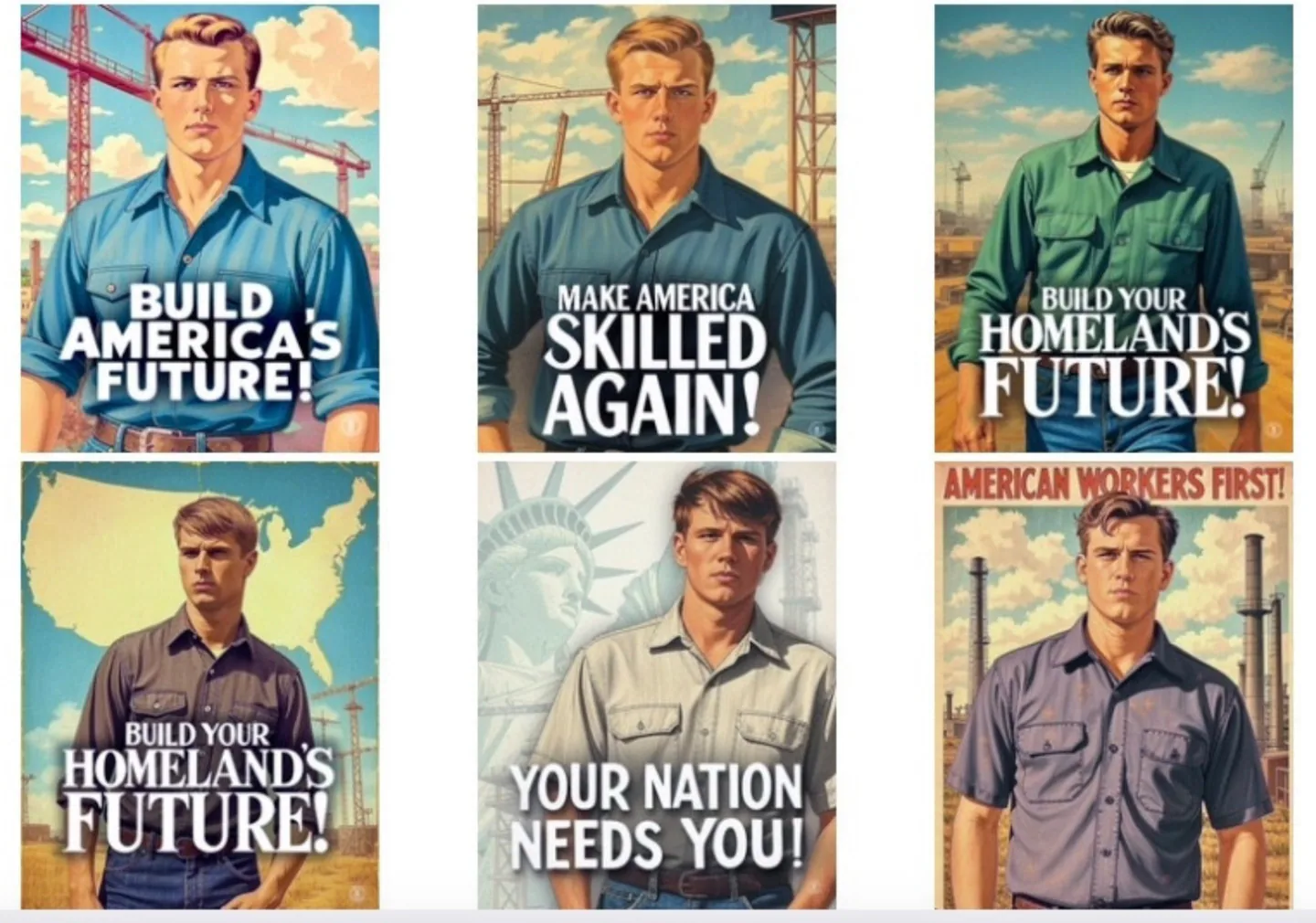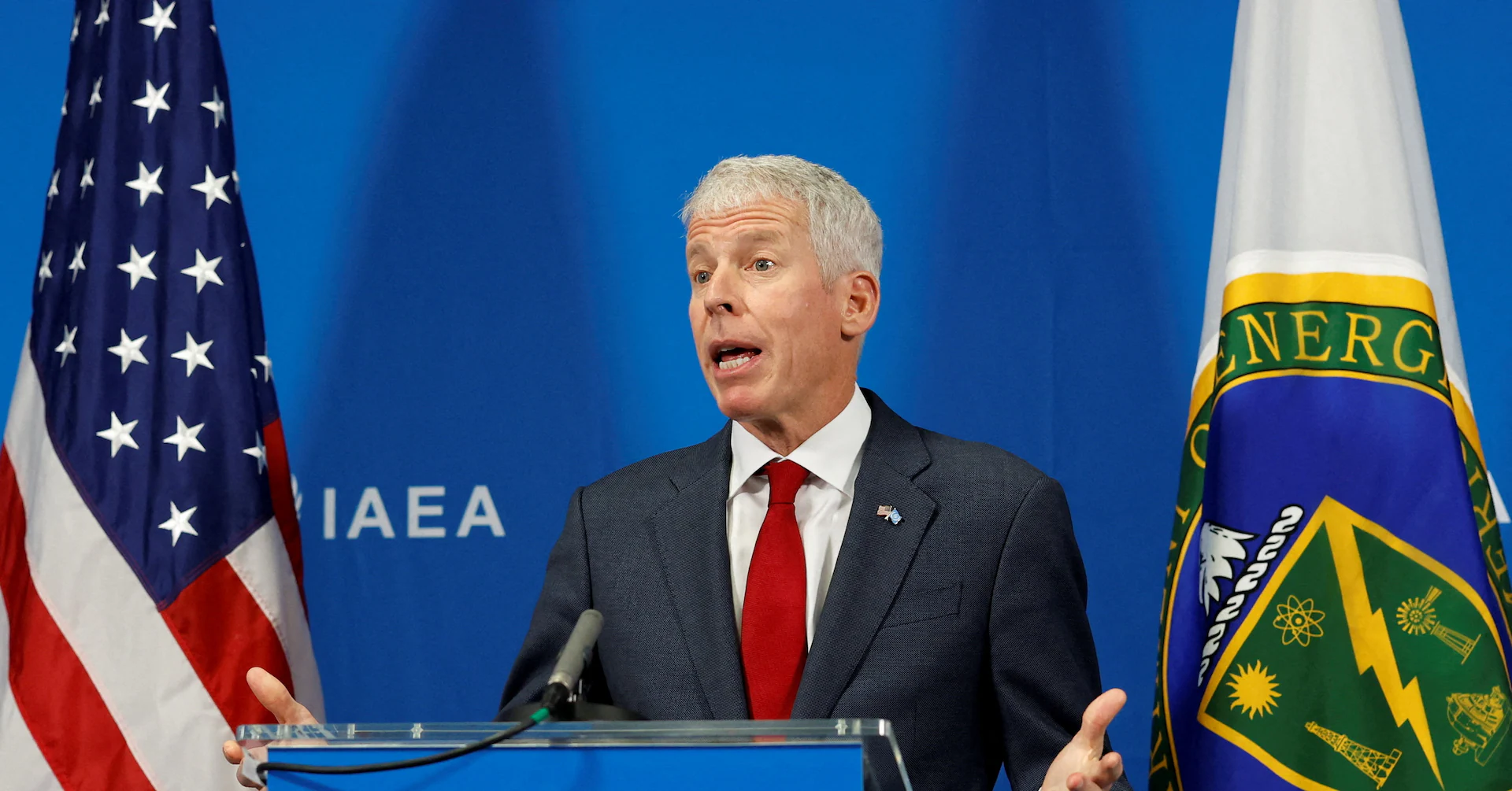Copyright The Boston Globe

A vast majority of the about two dozen poster-style images posted in recent months feature a White man; most are blond, and a significant number are blue-eyed. They have sharp jawlines, broad shoulders, and blue-collar uniforms, and they are placed against backgrounds that show construction equipment and factory stacks. Only one of the posts features a non-White man, who is flanked by a White woman and a White man. Renee Hobbs, a University of Rhode Island professor who teaches media literacy, said the Labor Department’s social media campaign checks off all the boxes of what she teaches as the four features of propaganda: It activates strong emotions, simplifies information and ideas, attacks opponents, and appeals to people’s deepest hopes, fears, and dreams. “It was so surprising to see these images in part because we’re so used to seeing multicultural representation in everything,” she said, “so this definitely sends a message.” Many of the illustrations appear to be generated by artificial intelligence, and several are from American artists and advertisements, according to experts and a Washington Post analysis of posts on the Labor Department’s official accounts on X, Facebook, Instagram, and Bluesky. Several postings show Christian imagery, including a painting of a White family of four attending a church service. Another illustration depicts a White family of four and a montage featuring scenes of a house, church, school, and factory. Labor Department spokeswoman Courtney Parella did not directly respond to questions about the campaign, including whether many of the images were AI-generated. “The Washington Post is manufacturing outrage that doesn’t exist,” she said in a statement. “Twisting social media posts celebrating American workers and the American Dream into a race story is absurd.” Most of the posts advertise the administration’s efforts to expand apprenticeship programs and limit foreign labor, including a new agency push called Operation Firewall to rein in misuse of the H-1B visa program, which allows companies to temporarily hire nonimmigrant foreign workers for certain roles. The posters feature bold-faced, all-caps text slogans such as “Build Your Homeland’s Future!” and “Restoring the American Dream!” Some of the art is pure Americana. The agency used Michigan-based artist William Brody’s painting of a rural farmhouse with an American flag basking in sunlight that he had named “An American Dream.” But Brody said he was not asked for permission by the Labor Department. He especially didn’t approve of seeing his painting included as part of a messaging campaign that he views as a far cry from the diverse country the American Dream has come to represent. “I feel like they hijacked it,” he said. Seth Harris, who served as President Biden’s top labor adviser, said that the Trump administration has offered little evidence that its efforts have led to increased hiring of American workers and that the images disregard America’s increasingly diverse workforce. “By purveying this image of an all-White workforce, they are choosing racism over economic growth,” Harris said. “That white supremacism is more important than the economic future.” Mark Krikorian, executive director of the Center for Immigration Studies, which favors greater restrictions on immigration, praised the campaign. He said it was attempting to improve the H-1B visa program and projecting a sense of patriotism in its messaging. “The point of this is to recapture a sense of social and national solidarity that’s been lost over the past generation,” Krikorian said. Judy Conti, director of government affairs at the National Employment Law Project, said she was shocked to see images that don’t reflect the identities of many American workers. White non-Hispanic men make up about one-third of the American workforce, and White non-Hispanic women are about one-quarter, according to federal labor data. About 20 percent of American workers are Hispanic or Latino, according to 2024 federal labor data, and about 13 percent are Black or African American. About 47 percent of workers are women. Conti noted that the ads also don’t reflect Labor Secretary Lori Chavez-DeRemer, who is Latina. “This isn’t a dog whistle,” Conti said. “This is a loud trumpet blaring that White men who are supporting their wives and children are worthy of good jobs.” The campaign is part of an effort by the administration to push for more manufacturing in the United States, which has been in decline for decades and is entering an even deeper slump. The administration has also embraced using a broad array of tariffs and has encouraged younger Americans to pursue high-skilled jobs. About 400,000 manufacturing jobs are open in the US, according to federal data, but experts warn a surge in factory jobs is unlikely anytime soon. Many of the posts in the Labor Department’s campaign idealize the country’s past industrial booms. The drawing of a White family of four was part of a Fortune magazine ad in the 1940s for Philadelphia-based Lee Tire and Rubber Co. that advertised “fundamentals,” including “homes and families; practical, efficient schools; church leadership that makes devotion to religion a spiritual inspiration; elimination of class hatred and resumption of confidence and mutual interest in each other; employment for all who want it and independence for everyone who will work for it.” The company announced the closure of its last tire plant in 1964. The Trump White House has said it plans to crack down on H-1B visas, amid other efforts to constrain legal immigration. Roughly half a million people in the US work through H-1B visas, a program that is especially popular among tech companies, according to federal data. Opponents of the H-1B program say it incentivizes companies to hire lower-cost foreign workers, displacing American employees in the process. Ron Hira, a professor of political science at Howard University and an expert on H-1B visas, said he is cautiously optimistic about the agency’s promises to better enforce the legal requirements of the H-1B program, though he said it still needs bigger reforms to stop companies that have abused it. “They’ve made some very strong statements at least, that they are really going to do something,” he said. “So I got to take them at their word, at least at this point, until we see what happens.”



